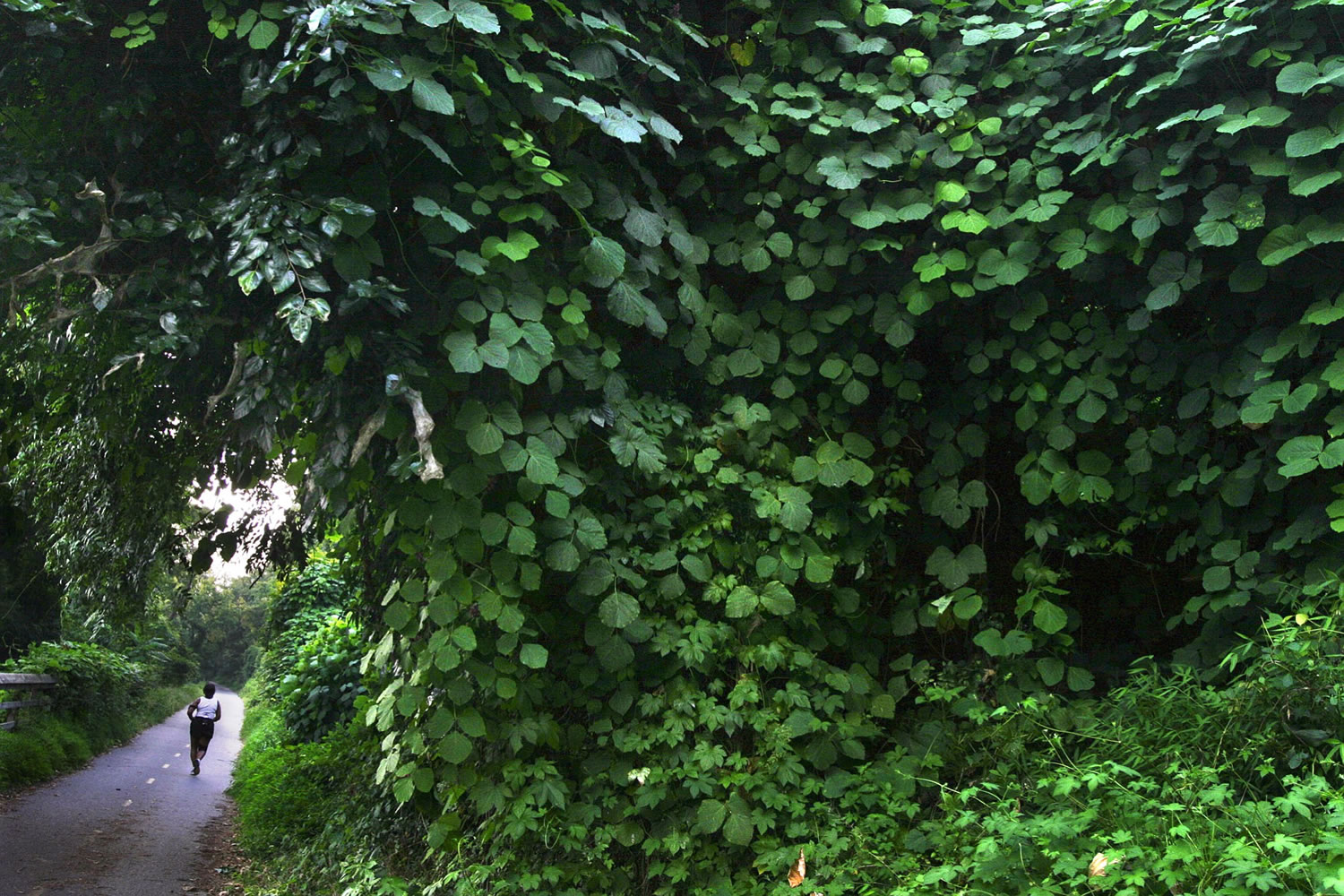CHICAGO — As the climate warms, the vine that ate the South is starting to gnaw at parts of the North, too.
Kudzu, a three-leafed weed first planted in the United States more than 100 years ago for the beauty of its purple blossoms, has been spotted in every county in Georgia, Alabama and North Carolina. It chokes young trees, brings down power lines and infests abandoned homes. Now the plant, which can grow as fast as a foot per day, is creeping northward, wrapping itself around smokestacks in Ohio, overwhelming Illinois backyards and even jumping Lake Erie to establish a beachhead in Ontario, Canada.
The invasive plant costs U.S. property owners about $50 million per year in eradication, according to the Nature Conservancy. Other estimates are 10 times higher. Agronomists and landscapers fear what the Department of Agriculture’s Lewis Ziska calls the star of “a bad 1950s science-fiction plant movie” will continue to expand its role, making a nuisance and carrying a disease devastating to soybeans.
Climate change is partly to blame, Ziska said, with the average U.S. temperature rising as much as 1.9 degrees Fahrenheit since 1895, most of that since 1970, according to the National Climate Assessment issued by the White House in May.
“The one thing that’s kept these invasives in check has always been cold weather,” said Ziska, a plant physiologist at the USDA’s Agricultural Research Service in Beltsville, Ma. “As the winters warm as a result of a changing climate, that more or less opens up a Pandora’s box of where these invasives can show up in the future.”
Invasive species of all types cause an estimated $1.4 trillion in damage worldwide each year, $138 billion of that in the U.S., according to the Nature Conservancy.
Gypsy moths brought from France spread throughout the U.S. and took just three years to strip the leaves off hardwood trees in an area the size of Virginia, according to the U.S. Forest Service. More than 5 million feral swine, descendants of pigs brought to the New World by Spanish explorers, roam forests in at least 35 states, feasting on corn crops and uprooting fences. The Asian citrus psyllid, a gnat-sized insect, has spread a disease killing oranges in Florida, shrinking this year’s crop.
Kudzu was introduced in the U.S. at the Japanese pavilion during the Centennial Exposition in Philadelphia in 1876, according to John Peter Thompson, who represents the Maryland Nursery and Landscape Association on the U.S. government’s Invasive Species Advisory Committee. For decades afterward, landscapers touted its potential as a forage crop and popularized it in the South to prevent soil erosion.
Then it got out of hand.
“By the 1970s, it was the vine eating the South,” Thompson said. “Kudzu becomes the poster child for alien invasive species gone wild.”
Kudzu thrives along roadsides and open areas, and there’s no “silver bullet” to get rid of it, with most people relying on a combination of pesticides and digging up the root crowns, said Nancy Loewenstein, a research fellow at Auburn University in Auburn, Alabama.
Its ubiquity in the South landed it on the cover of R.E.M.’s 1983 album, “Murmur.”
“I don’t even know another plant like this,” said Randy Westbrooks, an invasive species prevention specialist at Invasive Plant Control Inc. in Whiteville, N.C. “If you see it on your property, get rid of it as soon as you see it.”
In Canada, kudzu has been found in a 1.23-acre spot on the shores of Lake Erie near Leamington, Ontario, said Michael Irvine, the province’s vegetative management specialist with the Ministry of Natural Resources and Forestry. It’s “pure speculation” how it got there, he said.
The plant is a host for soybean rust, a disease that can be a “serious problem” for farmers, said Thompson of the invasive species council. Last year, soybean rust showed up in 408 counties in 13 states, according to the USDA.



